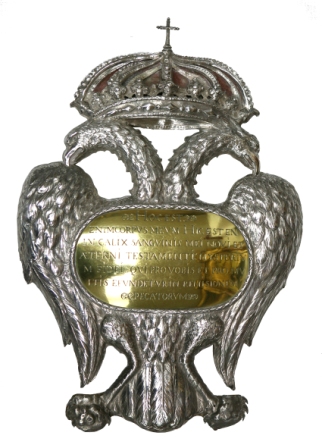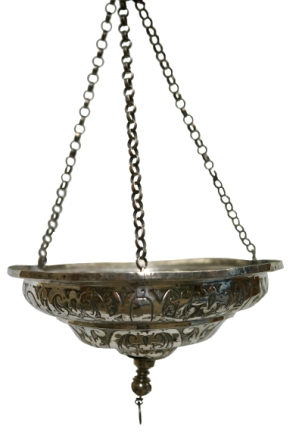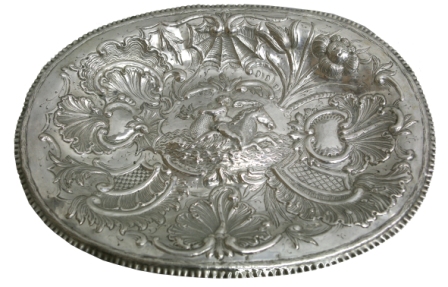August 18
Conferences
THE MONASTERY OF TULEBRAS
Sumptuary arts in the Tulebras monastery
D. Ignacio Miguéliz Valcarlos
Chair of Navarrese Heritage and Art
In spite of the vicissitudes of history and the adversities suffered, the monastery of Nuestra Señora de la Caridad de Tulebras conserves an important trousseau of silverware, as well as an interesting set of jewelry. The former is made up of religious and civil pieces, while the latter includes the jewelry that was used to adorn Our Lady of the Bed, the main devotion of this Cistercian center.
Within the pieces that make up the silver-plated trousseau, we must differentiate between those of religious and civil origin. The works considered as religious are those that were used in the service of divine worship, either for its employment in the liturgy, or as decoration in the temple. While the civil ones were used for the service of the nuns who lived in the monastery. Most of these jewels were carved in the Renaissance and Baroque centuries, and come mainly from three silversmith centers: Zaragoza, the most important workshop in the area and to which the temples of the Ribera region of Navarre went to a great extent to carry out their orders; Tudela, the closest geographically to Tulebras, but which did not keep artisans working continuously throughout these centuries; and Pamplona, which, despite being the capital and most productive center of Navarre, is the least represented. Among the religious pieces we can differentiate between the most common works in Navarrese temples, such as chalices and ciboria, the processional cross, the monstrance, a large group of reliquaries, the censer and the naveta, or a crown, and other less common pieces in church furnishings, such as the acetre, the lectern, or the set of candlesticks. The baroque sacras in the shape of a two-headed eagle, the monumental Eucharistic chest carved in 1684 by the silversmith Bernardo Peña from Alfaro, or the set of two lamps made by Felipe Terrén from Tudela in 1613 and given by two nuns from the monastery, the only pieces of this subject before the 19th century preserved in Navarre, stand out for their singularity. Also interesting are the two preserved crosiers, symbol of the authority of the abbess, and that remind us of the departure at the beginning of the 20th century from Tulebras of the one known as Pope Luna's crosier, today in the National Archaeological Museum, and that had entered the trousseau of this monastery in 1837, brought by cloistered nuns from the Cistercian monastery of Trasobares.

Sacra. Anonymous. XVIII Century

Lamp. Felipe Terrén. Tudela, 161
Of great interest are also the pieces of civil use preserved, due to their unusual presence in public or Church collections in Navarre, such as candlesticks, salt cellars, salvers or napkin holders, being of special interest a large Renaissance source with the arms of the congregations of Castile and Aragon or an eighteenth-century saucer, possibly by the Pamplona silversmith Isidro de la Cruz, with iconography of a putto riding a hippocampus. But above all we must point out the magnificent set of five salvers with foot, carved in the third quarter of the 18th century by the Zaragozan artisans Ruiz, Roces, Estrada and Gómez, which constitute one of the most significant examples of domestic silverware in Navarre.
Also noteworthy is the set of jewelry preserved in her trousseau by the Virgin of La Cama, also made up of pieces of religious and civil origin, although, given the deep overlapping that existed in the Spanish society of the Ancient Regime between the civil and the religious, the iconography of these pieces is also religious. Among these pieces we can mention a rich set of reliquaries, different medals and medallions, chest roses or pectoral crosses, carved in wood or rock crystal but mostly in silver in its color, gilded silver and gold, decorated with rhinestones, beads and enamels.

Azafate. Isidro de la Cruz? Pamplona 1760-1770
